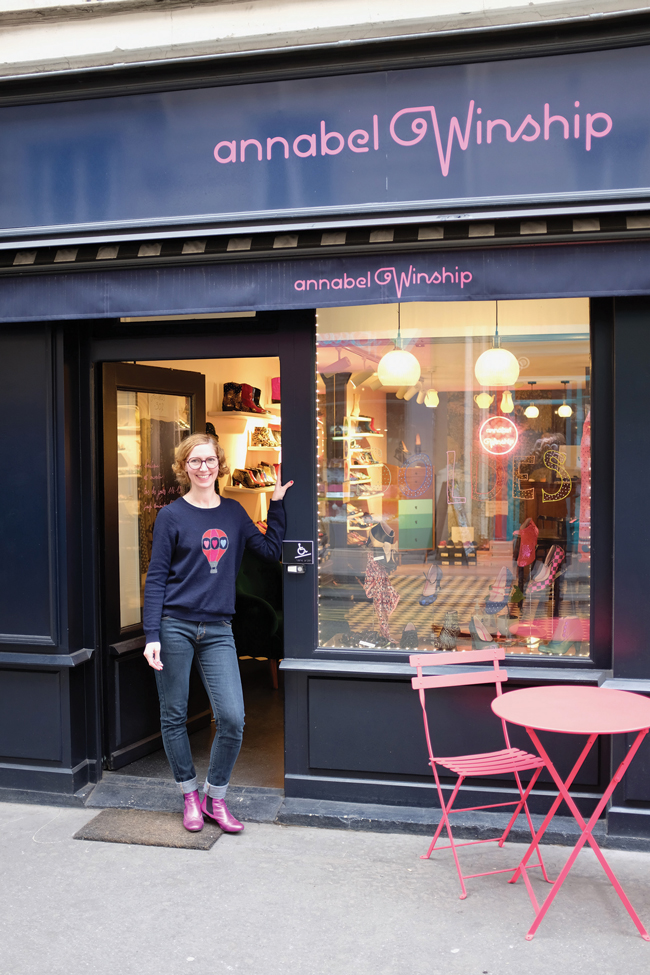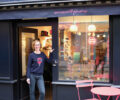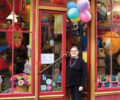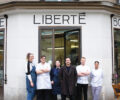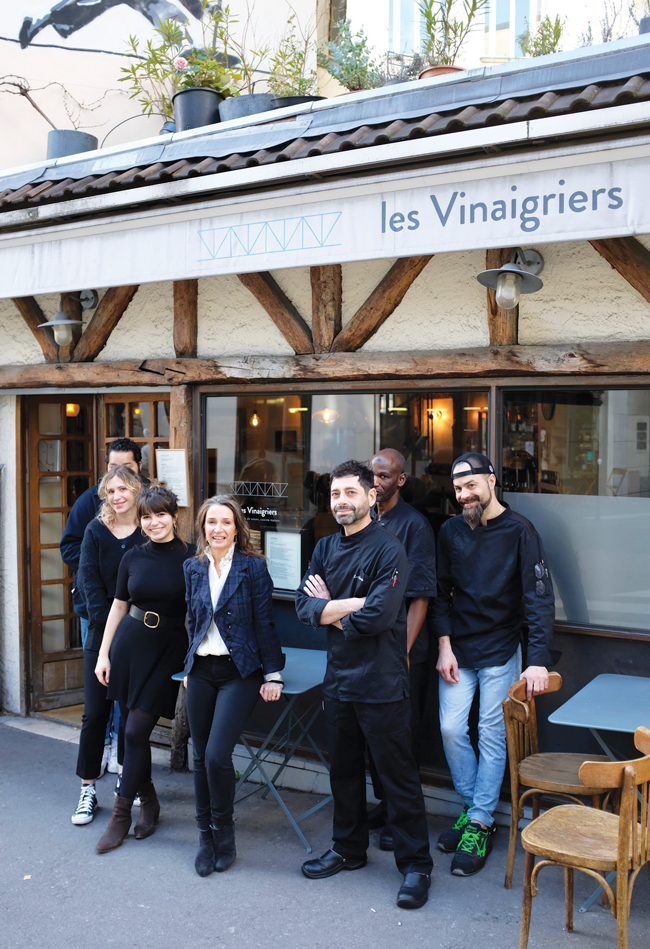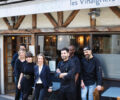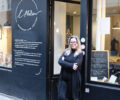Parisian Walkways: Rue des Vinaigriers in the 10th

This once-neglected neighbourhood is now a hip quartier, peopled by artisans from such diverse worlds as Japanese flower arranging to leatherwork to piñatas, as Jeffrey T Iverson discovers.
Since the turn of the 21st century, a well-chronicled transformation has taken place along the quays of the Canal Saint-Martin in Paris, as young entrepreneurs have been drawn by the watery calm and 19th-century façades to open wine bars, restaurants, boutiques and hotels there. Together, they changed a gritty, neglected neighbourhood into the so-called quartier générale des bobos – hipster central, in short.
But this profound evolution didn’t stop at the water’s edge, and has spilled over into the surrounding streets as well. Today, there are few places where that evolution has played out in such heartening ways as in a little tangle of streets just off the canal’s western bank and centred around Rue des Vinaigriers and Rue Lucien Sampaix, an area with a storied past that Le Figaro now calls “le nouvel îlot branché du Xe” – the new trendy enclave of the 10th district. An erstwhile bustling working class neighbourhood whose profitable manufacturing sector faded away, today a revival of artisan traditions is under way on these same streets, where a passion for fait-main (handmade) creations – be it in food, fashion or skilled crafts – now seems to be the requisite for opening up shop. Nestled between the canal and Boulevard Magenta, Rue des Vinaigriers and Rue Lucien Sampaix (located 100m from metro Jacques Bonsergent) form a tidy ‘X’ on the map.
In 2013, one of the neighbourhood’s most emblematic addresses opened at the very centre of this crossroads – Liberté (39 rue des Vinaigriers), a bakery and pastry shop like Paris had never seen. A vast airy space with modern lighting, a minimalist décor, including a giant slab of grey marble for a counter-top, invariably covered with great loaves of divine sourdough breads and beautiful, buttery croissants. Most unusually, the kitchens were fully visible from the shop and outside, with large windows overlooking the street so any passers-by could stop and watch the busy ballet of bakers. “We wanted our kitchens wide open to the public,” recalls founder Mickael Benichou. “At that time, the vast majority of neighbourhood bakeries were no longer making everything they sold, but using pre-made viennoiseries, pastries, even sandwiches. And we were proud to be able to show that here we make absolutely everything by hand.”
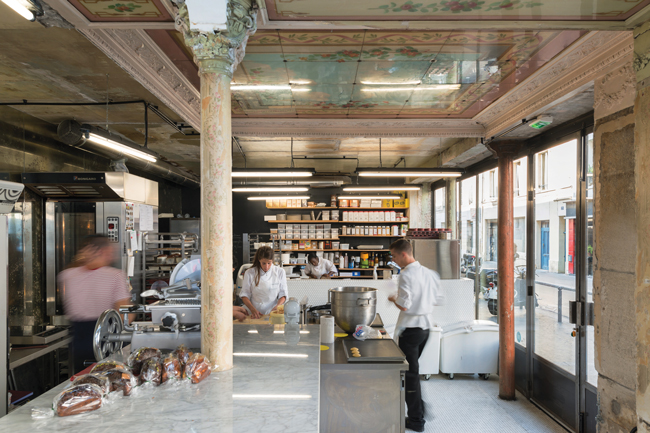
Liberté’s kitchens on full display © Liberte
This marriage of modern design and old school baking techniques made Liberté an instant hit. Nine years later, Benichou has five bakeries in Paris and two in Japan, but his success, he insists, is rooted in the fertile ground of this unassuming little street called Rue des Vinaigriers.
“It really was the right place at the right time,” recalls Mickael. “We arrived at the beginning of a revival. Over the years this once busy working class neighbourhood had entered a slump and become a rather sketchy area. But with the gentrification of the Canal Saint-Martin that was changing.”
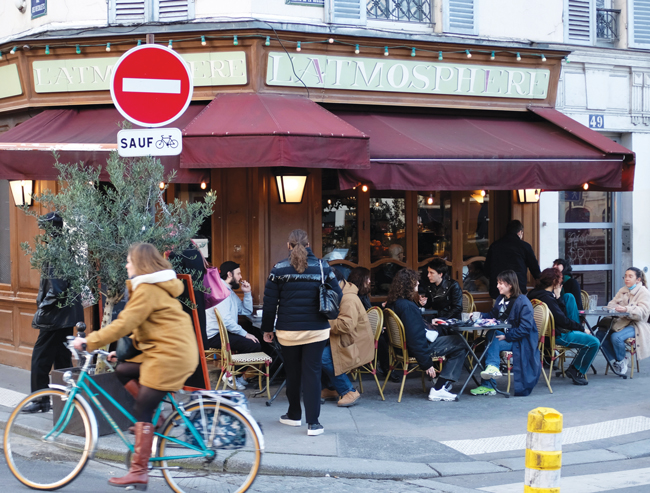
Unwind at L’Atmosphère © Jeffrey T Iverson
The evolution had begun around 1999, when a string of three colourful clothing and home décor boutiques opened up on the corner of Rue Lucien Sampaix and the Quai de Valmy under the name of Antoine & Lili. Their arrival revived the old café across the street – L’Atmosphère, at 49 rue Lucien Sampaix – which began to draw a new clientele with weekly concerts and its atmospheric terrace overlooking the canal. In 2000, the large advertising agency BETC, boasting major clients in fashion and cinema, opened steps away on Rue du Faubourg Saint-Martin. In 2006, a 1930s public bathhouse on Rue Legouvé, just around the corner from Rue Lucien Sampaix, was transformed into a dynamic photography gallery – Les Douches la Galerie. Soon, Rue Legouvé’s exposed brick walls became a favourite fresco gallery for urban artists. Meanwhile, in 2007, the cult bookshop Philippe le libraire, dedicated to the ninth art (graphic novels and comics), opened at 32 rue des Vinaigriers. In 2010, the fashion agency Les Jolis Mômes opened in front of Les Douches, while the innovative furniture design agency KANN opened shop on Rue des Vinaigriers.
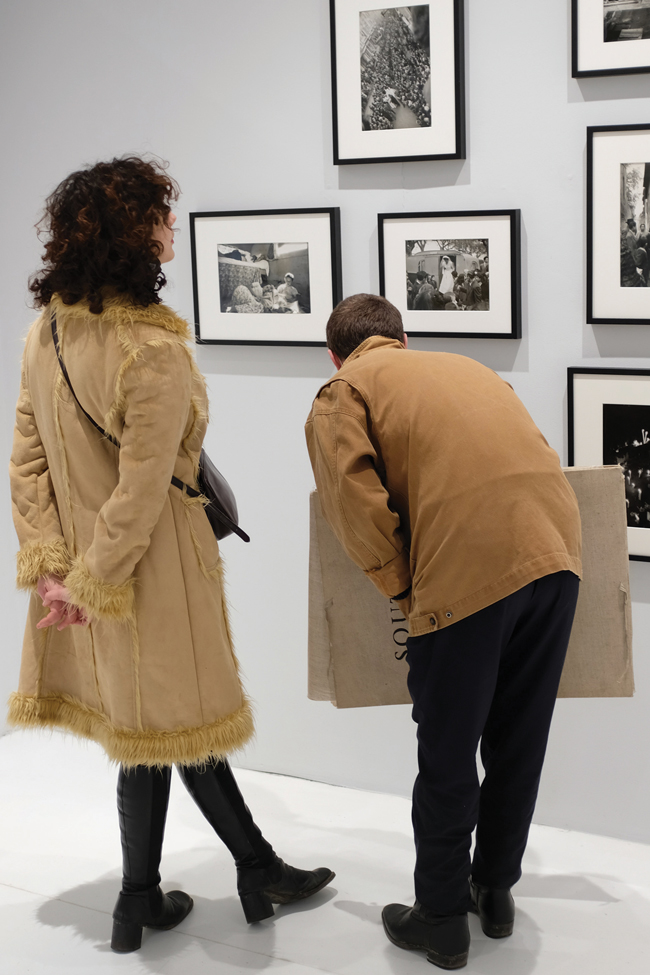
Dynamic photography gallery Les Douches is worth a visit © Jeffrey T Iverson
As artists, designers and young couples moved into the area, demand for new kinds of eateries and boutiques followed. Healthy eating spots popped up, from the vegan restaurant Sol Semilla (23 rue des Vinaigriers) in 2005, offering delicious plant-based dishes packed with super-foods, to Bob’s Juice Bar in 2006, bringing Parisians their first taste of fresh-pressed carrot juice and matcha cookies. In 2011, the Italian restaurant Piccoli Cugini brought authentic hand-tossed pizzas to Rue des Vinaigriers, and in 2012, two young graduates of the Ferrandi school of culinary arts opened a sweet little pastry shop La Fabrique à Gâteau at nº 34. In 2013, things really took off: Baci Bisou (25 rue des Vinaigriers) introduced the neighbourhood to handmade Italian gelato, Holybelly opened at 19 rue Lucien Sampaix, bringing New York-style all-day breakfasts to Paris, and at 39 rue des Vinaigriers Paris got its first taste of authentic fish and chips at the Sunken Chip (since replaced by Rice and Fish, offering lunchtime poke bowls and chirashi). Even the historic half- timbered building at nº42, once home to a restaurant known as La Bombe Boche (in memory of a German shell which landed at its doorstep during WWI), was elegantly renovated in 2013 and reopened as the delightful restaurant Les Vinaigriers.
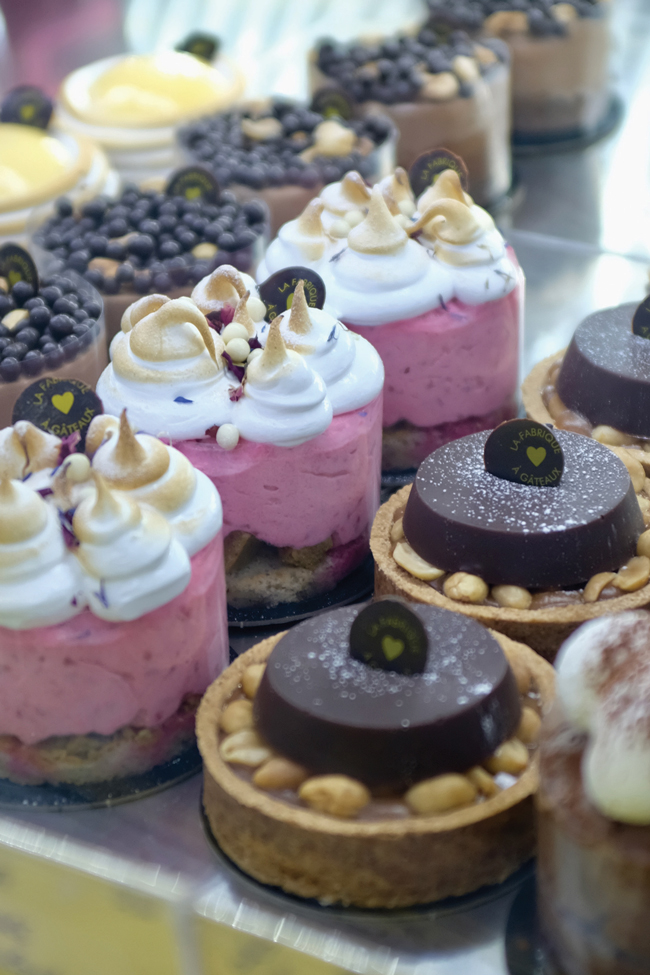
La Fabrique à Gâteaux is the place for pastries © Jeffrey T Iverson
This wave of new businesses changed the neighbourhood’s physiognomy, and yet also created a sense of synergy. For these newbies all shared an uncommon devotion to high quality ingredients and an artisanal approach to preparing food. From Baci Bisou, preparing their gelato with such rigour they received a national award for Eccellenza Artigiana (Artisanal Excellence); to the restaurant La Bécane à Gaston (24 rue Lucien Sampaix), making everything from their focaccia to their stocks and sauces from scratch; to the neo-bakery Liberté, reviving the dying profession of the tourier (master of the art of making hand-laminated croissant dough and puff pastry)… the restaurants and shops of Rue des Vinaigriers and Lucien Sampaix seem to symbolise a shift in consciousness in a new generation of entrepreneurs. “Our artisan traditions, this culture handed down to us, are an exceptional treasure,” says Mickael, of Liberté. “My idea was to try and help showcase the savoir-faire of French baking in a modern context, doing for la boulangerie what others have done for fashion, gastronomy, or leatherwork.”
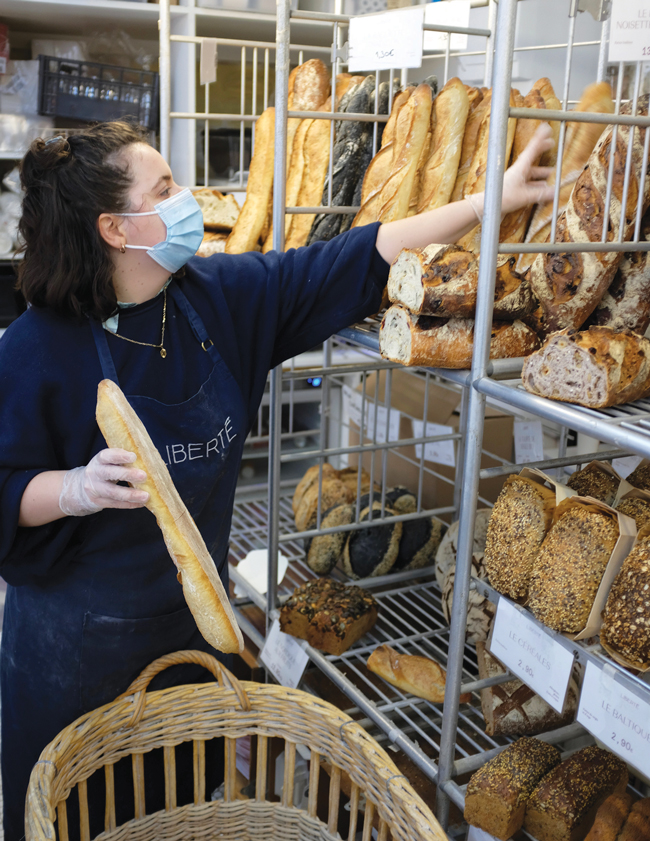
Traditional breadmaking methods are used at Liberté © Jeffrey T Iverson
As it turns out, Rue des Vinaigriers was already a locus of French artisan traditions centuries ago. As far back as 1728, the street carried its current name, ostensibly in reference to vinegar makers who worked here. With the inauguration of the canal in 1825 came a wave of factories, benefiting from the new mode of transport. The Gaveau piano company opened on Rue des Vinaigriers in 1847 and would become one of France’s largest manufacturers. Today, the concert hall La Salle Gaveau in the 8th arrondissement is all that remains of this once-famous brand. But an even older company, Maison Poursin, founded in 1830 at nº35, still stands today. Originally specialising in stirrups, spurs and harness buckles, Poursin widened its purview with the decline of horse travel to include belt buckles, chains and buttons for the clothing industries. Today perhaps the oldest manufacturer in Paris, Maison Poursin supplies some of the biggest names in fashion.
Today, between the restaurants and boutiques, ateliers are buzzing once again. Take l’Atelier, which opened in 2020 at 20 rue Lucien Sampaix. Founder Tiffanny Maquin-Roy worked years in advertising until one day she decided to try a training course under a master leatherworker, and immediately fell in love with the craft. Determined to share her passion, today she offers four-hour workshop classes teaching fashion lovers how to create hand-stitched leather handbags. “Today, people are submerged in the virtual and digital world,” she says. “They feel the need to return to concrete things, to experience the pride you get from making something with your hands.”
Eugénie Myosotis, a master of the art of Japanese flower arrangement, ikebana, confirms the trend. Seven years ago, she and her partner decided to offer Parisians the chance to come to their shop (Ikebanart, 49 rue Lucien Sampaix) and learn to compose ornamental plants like kokedama, grown in a moss-covered ball of soil. Now they teach classes eight times a week.
“There’s been a huge boom for workshops like this in every sector,” she says. “People want to make their own ceramics, blow their own glass, create their own mozzarella!” This summer, Evelyne Lohier, an artisan embroiderer who has worked in haute couture, will step out of her atelier at 49 rue des Vinaigriers and partner with the chic clothing shop Le Bazar du Canal at 44 rue Lucien Sampaix to offer al fresco workshops on how to ‘upcycle’ and personalise clothes with embroidery.
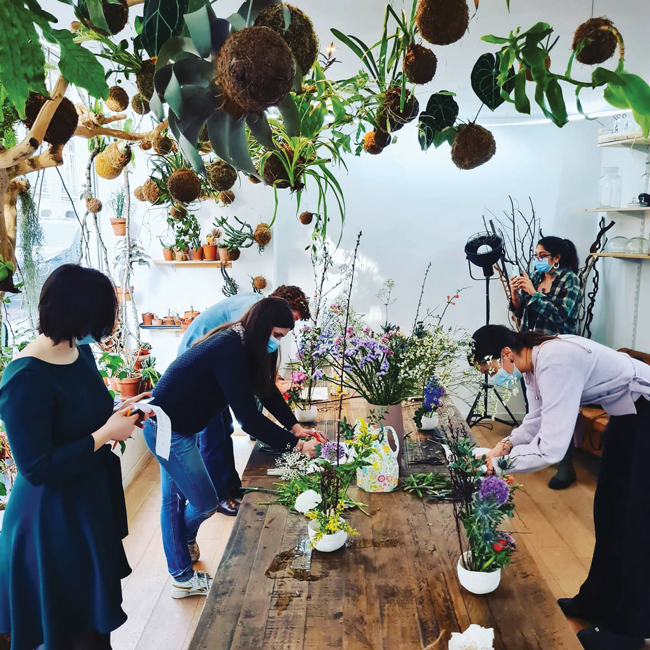
Learn the art of Japanese flower arranging at Ikebanart © Ikebanart
Today, these once-quiet streets have become well-trodden walkways for pedestrians heading to and from the canal, making them increasingly enticing for entrepreneurs opening a flagship address. In 2018, Marc Antoine Dohollou opened his gourmet grocery shop and oyster bar Maison Calibré at 13 rue Lucien Sampaix – a delicious spot for an aperitif of wine and brine before dinner. In 2019, at 24 rue des Vinaigriers, Annabel Winship opened her eponymous boutique, an enchanting universe of women’s shoes inspired by cinema, music and girlhood fantasies. And in 2020, My-Ly Pham – a French-born child of Vietnamese immigrants, who Télérama magazine heralds as one of the “women who are shaking up Parisian gastronomy” – opened Banoi Vinaigriers at nº51, her second restaurant dedicated to the authentic and unexpected flavours of modern Vietnamese cuisine, epitomised by the most exquisite fresh spring rolls in Paris.
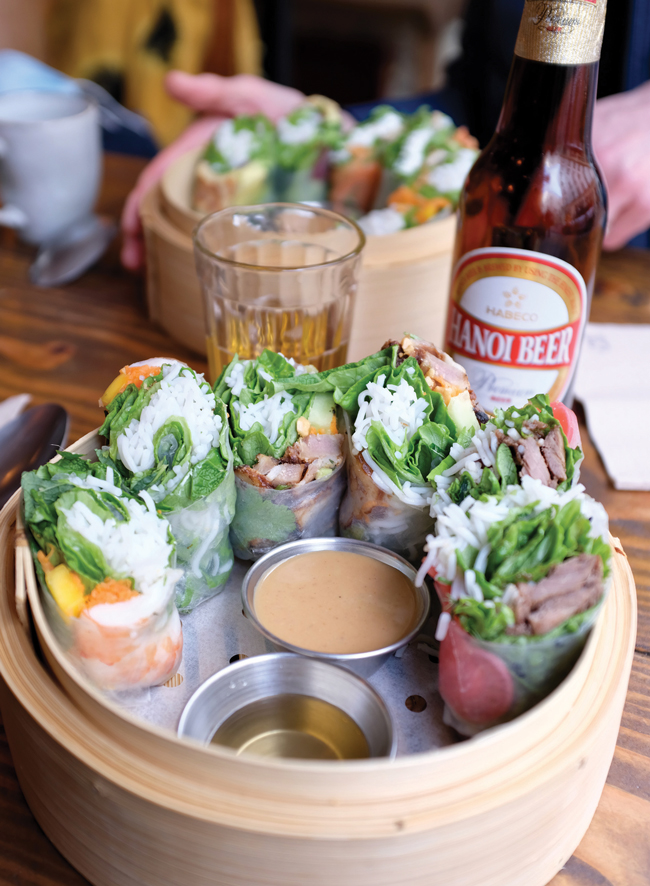
The best spring rolls in all of Paris can be found at Banoi Vinaigriers © Jeffrey T Iverson
Yet while Rue des Vinaigriers seems to be in constant evolution, some things haven’t changed. At nº26, the restaurant Le Bourgogne, better known as Chez Céline et Maurice, has been open for generations. Originally a boarding house for those working the canal’s barges and factories, the interior (and prices) have changed little since Céline’s grandparents, born in 1913, ran the place. Céline will gladly regale you with local lore while you enjoy simple, hearty fare like Savoy fondue or prime rib with Béarnaise sauce.
If Céline personifies the neighbourhood’s working class history, her neighbour Elena Farah embodies its artisan spirit. In 2002 the Colombian-born artist opened her workshop La Piñata at nº25, and within a few years was the most famous piñata maker in Paris: she once crafted 350 giant black and red piñatas for the storefront of fashion designer Sonia Rykiel. But today her primary clientele is the neighbourhood that surrounds her, full of families and children who visit her daily. It’s a neighbourhood she still adores, like the rest of her adopted city.
“When you have an artistic soul, Paris is where you should be,” she says. “Paris is a city that was designed for all time – it’s a work of art. Wherever you go, behind every door you peek around, and every hidden courtyard, there are magical places to discover. So whenever I feel a little down, all I need to do is go for a walk in the city, and let myself become lost in the magic of Paris.”
Businesses around Rue des Vinaigriers
Annabel Winship
24 rue des Vinaigriers
Tel. +33 1 71 37 60 46
With its kaleidoscope of beautifully crafted, fantastically colourful heels, this charming boutique is a veritable candy store for lovers of women’s shoes. Founded by a Franco-British fashion designer who went gaga over Dorothy’s ruby slippers as a girl while watching The Wizard of Oz, Annabel creates shoes inspired by cinema and music to offer women a touch of fantasy and glamour to add to their outfit.
La Piñata
25 rue des Vinaigriers
Tel. +33 1 40 35 01 45
For the past 20 years, this resplendent old boutique has been bringing joy to Parisian children on their birthdays. Founded by Elena Farah, a Colombian-born artist, La Piñata naturally offers a multitude of magnificent, hand-crafted piñatas imagined by Elena, but also a wonderful array of children’s books, costumes, quality wooden toys, and fun and amusing party favours sure to delight any tot.
Liberté
39 rue des Vinaigriers
Tel. +33 1 42 05 51 76
Perhaps the first contemporary bakery in Paris, Liberté offers artisan breads, pastries and viennoiseries in an airy, artfully designed boutique and café. Opened in 2013, Liberté is not just a modern makeover of the Parisian boulangerie, it’s a bastion of artisan traditions with its patiently-prepared, succulent sourdoughs and exceptional croissants, made the old way with dough laminated by hand.
Les Vinaigriers
42 rue des Vinaigriers
Tel. +33 1 46 07 97 12
Situated at the crossroads of a vibrant enclave of ateliers and artisan eateries, this charming restaurant is a fitting symbol for this historic yet rapidly gentrifying neighbourhood. Les Vinaigriers offers delicious, modern cuisine of fresh, Mediterranean flavours, matched with natural wines, colourful cocktails, and a transporting décor with centuries-old wooden beams and a corkscrew staircase.
Banoi Vinaigriers
51 rue des Vinaigriers
Tel. +33 1 83 87 47 82
At a time Parisian foodies are hungry for culinary voyages, Banoi’s founder My-Ly Pham, a French-born daughter of Vietnamese immigrants, offers the chance to taste fresh spring rolls like her grandmother (banoi) prepared them. Prepared seconds before being served, with aromatic herbs and veggies, and fillings like teriyaki salmon, Peking duck, or lemongrass pork, they’re a meal unto themselves!
L’Atelier
20 rue Lucien Sampaix
Tel. +33 1 71 24 42 71
With its DIY workshop classes, l’Atelier offers fashionistas the chance to roll up their sleeves and handcraft their own little piece of leather luxury. Founder Tiffanny Maquin-Roy studied leatherwork under a master craftsman who formerly worked for Hermès.Today she helps clients transform exquisitely coloured hides into a hand-stitched handbag, tote bag, or other fine leather goods in just hours.
From France Today Magazine
Lead photo credit : This canalside quarter is buzzing with artisanal makers and fantastic foodie destinations © Jeffrey T Iverson
Share to: Facebook Twitter LinkedIn Email
More in art, artisan, Bakeries, gallery, Hip Quartier, hipster, restaurants, Rue des Vinaigriers
Leave a reply
Your email address will not be published. Required fields are marked *

